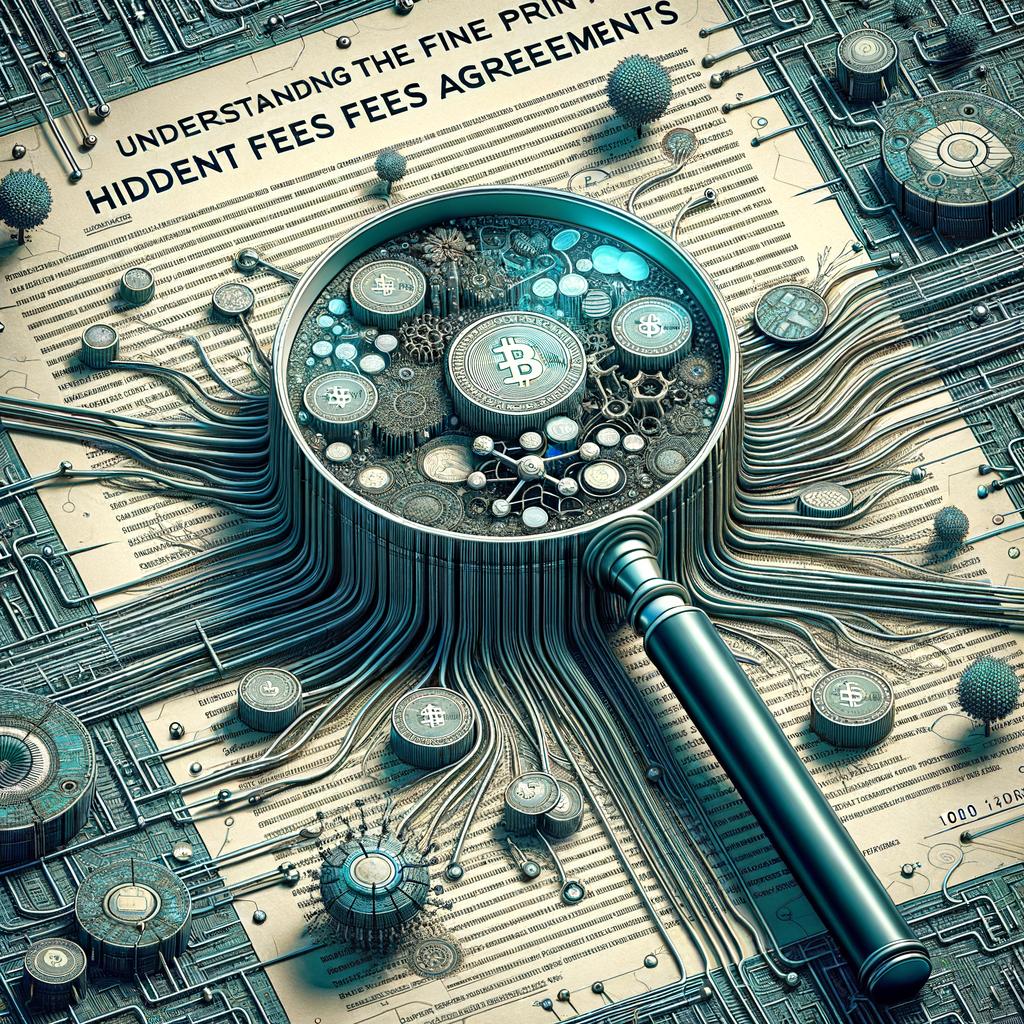Are you a small business owner looking for an easy and efficient way to process payments? Well, look no further! Small business payment processing is the solution you’ve been searching for. Say goodbye to cumbersome cash transactions and hello to seamless electronic payments.
Gone are the days of fumbling through stacks of bills and coins. With small business payment processing, you can accept credit and debit card payments with just a few simple steps. Whether you’re at a brick-and-mortar store or selling online, this convenient service allows you to cater to the needs of your customers in a fast and secure manner.
One of the biggest benefits of small business payment processing is the ability to streamline your financial operations. No more chasing down customers for overdue payments or manually inputting transaction information. Everything is automated, saving you time and minimizing the chances of human error.
In addition to improving efficiency, small business payment processing also enhances security. With encryption technology and fraud protection measures in place, you can rest easy knowing that your customers’ sensitive information is safe and secure.
But perhaps the best part of all is the boost in sales that comes with offering multiple payment options. When customers have the flexibility to pay with their preferred method, they are more likely to make a purchase. And happy customers mean repeat business and positive word-of-mouth referrals.
So why wait? Make the switch to small business payment processing today and watch your business grow! With the convenience, security, and increased sales that come with this service, you’ll wonder how you ever managed without it.
In a world where customization is king, it’s no surprise that consumers have come to expect personalization in every aspect of their lives, even when it comes to making payments. Gone are the days of one-size-fits-all approaches; today’s consumer wants a tailored experience that caters to their unique preferences and needs.
Personalization in payments is more than just a nice-to-have feature—it’s a necessity in order to stay competitive in the ever-evolving landscape of the digital economy. With advancements in technology and the rise of e-commerce, consumers now have more choices than ever before when it comes to how they make payments. From mobile wallets to contactless payments, the options are endless.
But with this abundance of choices comes a new set of challenges for businesses. How do you stand out in a sea of competitors vying for the attention of tech-savvy consumers? The answer lies in personalization. By tailoring the payment experience to meet the expectations of today’s consumer, businesses can create a more engaging and memorable relationship with their customers.
One way to achieve personalization in payments is through the use of data analytics. By analyzing consumer behavior and preferences, businesses can gain valuable insights into what drives their customers to make purchasing decisions. This data can then be used to create personalized payment options that cater to the individual needs of each customer. For example, offering a reward program that incentivizes customers to make repeat purchases or providing customized payment plans based on their spending habits.
Another key aspect of personalization in payments is the user experience. Today’s consumer expects a seamless and intuitive payment process that is easy to navigate and secure. By investing in user-friendly payment platforms and technologies, businesses can create a positive and hassle-free experience for their customers, increasing satisfaction and loyalty in the process.
Ultimately, personalization in payments is about putting the customer first. By understanding their preferences and offering tailored solutions that meet their expectations, businesses can create a more personalized and meaningful relationship with their customers. In a world where customization is king, personalization in payments is the key to unlocking success in today’s digital economy.
Are you a small business owner in need of quick funding to boost your cash flow? Look no further than a merchant cash advance! This innovative financial solution is revolutionizing the way small businesses access the capital they need to thrive and grow.
Picture this: you’re a small business owner with big dreams. You have a bustling store front, loyal customers, and products that practically fly off the shelves. But sometimes, keeping up with expenses can be a challenge. That’s where a merchant cash advance comes in.
With a merchant cash advance, you can receive a lump sum of cash upfront in exchange for a percentage of your daily credit card sales. This allows you to access the working capital you need to cover expenses, invest in new equipment, or launch a marketing campaign – all without the hassle of traditional bank loans.
One of the best things about a merchant cash advance is the flexibility it offers. Unlike traditional loans that require monthly fixed payments, a merchant cash advance is repaid based on a percentage of your daily credit card sales. So on slow days, you’ll pay less – and on busy days, you’ll pay more. It’s a win-win for both you and the lender.
So why choose a merchant cash advance over a traditional loan? For starters, the application process is simple and fast. Most lenders will approve your application within days, and you can receive funding in as little as 24 hours. Plus, approval rates are typically higher than traditional loans, making it a great option for small businesses with less-than-perfect credit.
In conclusion, if you’re a small business owner in need of quick cash flow assistance, a merchant cash advance could be the perfect solution for you. With its flexibility, speed, and ease of access, it’s no wonder why more and more small businesses are turning to merchant cash advances to fuel their growth and success. So why wait? Apply for a merchant cash advance today and take your business to the next level!
As we navigate through the digital age, it’s fascinating to see how different generations approach the topic of payment preferences. From baby boomers to Gen Z, each group has a unique perspective and set of priorities when it comes to how they choose to make payments.
Baby boomers, often known for their traditional values, tend to prefer more conventional methods of payment such as cash or checks. They value security and reliability, and may be wary of newer, more technologically advanced payment options. However, as they become more comfortable with technology, many are embracing online banking and mobile payment apps.
Generation X, sandwiched between the boomers and millennials, tends to be more diverse in their payment preferences. They appreciate convenience and efficiency, and are early adopters of new payment technologies. From credit cards to digital wallets, Gen Xers are open to a variety of options that make their lives easier.
Millennials, known for their tech-savvy ways, are leading the charge when it comes to mobile payments and peer-to-peer platforms. They value speed and convenience above all else, and are more likely to use services like Venmo or PayPal to split expenses and make quick transactions. With a strong emphasis on sustainability and social responsibility, many millennials also prefer to support businesses that offer environmentally friendly payment options.
Gen Z, the youngest generation to enter the workforce, is changing the game yet again. With a strong preference for digital and contactless payments, they are more likely to use apps like Apple Pay or Google Wallet. Gen Zers are also more likely to seek out businesses that offer cryptocurrency payment options, as they value innovation and are always looking for the next big thing.
In conclusion, understanding generational differences in payment preferences is crucial for businesses looking to cater to a wide range of customers. By recognizing the unique needs and priorities of each generation, companies can better tailor their payment options to meet the evolving demands of today’s consumers. Whether you’re a baby boomer still writing checks or a Gen Zer investing in Bitcoin, there’s a payment option out there for everyone.
In a world that seems to be constantly on the move, traditional payment methods are quickly becoming a thing of the past. Cash is no longer king, and even credit cards are starting to feel outdated. Enter mobile payment processing – the latest innovation that is revolutionizing the way we pay for goods and services.
Imagine being able to make a purchase with just the tap of a finger on your smartphone. No need to fumble through your wallet for the right change or swipe your card through a machine. With mobile payment processing, all you need is your phone and an app to take care of the rest.
But how exactly does it work? It’s simple. All you have to do is link your credit or debit card to a mobile payment app, such as Apple Pay, Google Pay, or Samsung Pay. When you’re ready to make a purchase, just hold your phone up to a contactless payment terminal and voilà – the payment is complete.
Not only is mobile payment processing convenient, but it’s also secure. With features like fingerprint recognition and tokenization, your financial information is kept safe and sound. Plus, you’ll receive instant notifications for every transaction, so you can keep track of your spending in real-time.
Businesses are quickly jumping on the mobile payment bandwagon, too. From small coffee shops to large retailers, more and more establishments are accepting mobile payments as a way to streamline transactions and enhance the customer experience. And with the rise of e-commerce, mobile payment processing is also making online shopping faster and more convenient than ever before.
So whether you’re grabbing a cup of coffee on the go or doing some online shopping from the comfort of your couch, mobile payment processing is the way of the future. It’s easy, secure, and oh-so convenient. Say goodbye to cash and cards – your phone is all you need to make a payment in today’s fast-paced world.
As we dive deeper into the digital age, the concept of cashless transactions has become increasingly prevalent in our daily lives. From swiping a card at the grocery store to sending money through a mobile app, it seems like paper money is becoming a thing of the past. But what does this mean for the future of consumer adaptation?
As technology continues to advance at lightning speed, so too does the way we handle our money. Cashless transactions offer convenience, security, and efficiency like never before. With just a tap or a swipe, we can make purchases, transfer funds, and pay bills with ease. No more fumbling for loose change or worrying about lost or stolen cash – everything we need is right at our fingertips.
But with these advancements come challenges in consumer adaptation. Some may be hesitant to fully embrace this new way of handling money, citing concerns about privacy, security, and technological literacy. It can be daunting to navigate the ever-changing landscape of digital financial services, with new apps and payment methods constantly emerging.
However, as the world continues to shift towards a cashless society, it is vital for consumers to adapt and stay informed about the latest advancements in financial technology. Education and awareness will be key in helping individuals feel confident and secure in making the transition to cashless transactions.
The future of cashless transactions is bright, with more innovative solutions on the horizon. From contactless payments to digital wallets, the possibilities for streamlined and secure transactions are endless. By embracing these advancements and staying informed, consumers can be ready to navigate the ever-evolving world of digital finance with ease. So why not take the leap into a cashless future? Your wallet – and your future self – will thank you.
In today’s fast-paced world of business, staying ahead of the curve is crucial. From AI-powered chatbots to virtual reality presentations, innovation is the name of the game. And when it comes to making payments, it’s no different. Gone are the days of fumbling for cash or writing out paper checks. Enter the world of business payment solutions.
Imagine a world where all your transactions are seamless, secure, and efficient. With the right payment solutions, this dream can become a reality. Whether you’re a small startup or a large corporation, finding the right payment solution for your business can make all the difference.
From mobile payment apps to online payment gateways, the options are endless. But with so many choices out there, how do you know which one is right for you? That’s where we come in. In this article, we’ll break down the top business payment solutions on the market and help you navigate the world of digital transactions.
One of the most popular options for businesses of all sizes is the use of mobile payment apps. With just a few taps on your phone, you can send and receive payments in seconds. Apps like PayPal, Venmo, and Square Cash have revolutionized the way we do business, making it easier than ever to pay and get paid.
For larger corporations looking for a more robust payment solution, online payment gateways are the way to go. These gateways allow businesses to securely process transactions online, from credit card payments to bank transfers. Providers like Stripe, Square, and Authorize.Net offer a range of features to suit your business needs.
But the benefits of business payment solutions don’t stop there. By streamlining your payment process, you can save time and money, improve cash flow, and reduce the risk of human error. Plus, with the rise of contactless payments and digital wallets, the future of business transactions is looking brighter than ever.
So whether you’re a solo entrepreneur or a Fortune 500 company, it’s time to embrace the world of business payment solutions. Say goodbye to the days of paper checks and hello to a more efficient, secure, and convenient way of doing business. With the right payment solution by your side, the possibilities are endless.
Let’s face it, nobody likes reading the fine print. It’s like trying to decipher an ancient language filled with jargon and legal mumbo jumbo. But when it comes to payment processing agreements, taking the time to understand the fine print can save you from getting hit with unexpected fees.
Hidden fees are the bane of every business owner’s existence. You sign up for a payment processing service thinking you’re getting a great deal, only to be blindsided by a slew of charges that you didn’t even know existed. That’s why it’s crucial to dig deep into the fine print before signing on the dotted line.
One common hidden fee to watch out for is the PCI compliance fee. This fee is charged by payment processors to cover the costs of ensuring that your business is compliant with the Payment Card Industry Data Security Standard (PCI DSS). While it’s essential to protect your customers’ data, some processors will sneak in hefty fees for this service without clearly disclosing it upfront.
Another sneaky fee to be aware of is the chargeback fee. Chargebacks occur when a customer disputes a transaction, and the processor charges you a fee for handling the dispute. Some processors will tack on additional fees for chargebacks, so make sure you know exactly what you’re getting into before signing any agreements.
And let’s not forget about the dreaded early termination fee. Some processors will try to lock you into a long-term contract and charge you exorbitant fees if you try to cancel before the contract term is up. Make sure to read the fine print carefully to avoid getting stuck in a costly agreement.
So, how can you protect yourself from hidden fees in payment processing agreements? The key is to read the fine print carefully, ask questions if something isn’t clear, and negotiate any fees that seem unreasonable. By taking the time to understand the fine print, you can avoid getting blindsided by hidden fees and keep your hard-earned money where it belongs – in your pocket.
In today’s fast-paced world, convenience is key. With the rise of mobile payments, customers now have the power to make purchases with just a tap of their finger. But mobile payments are more than just a convenient way to pay for goods and services – they are revolutionizing the way businesses interact with their customers.
One of the biggest advantages of mobile payments is the enhanced customer experience they provide. Gone are the days of fumbling for cash or waiting in long lines to use a card machine. With mobile payments, customers can simply pull out their phone, scan a QR code, or use contactless payment to complete their transaction in seconds. This streamlined process not only saves time for customers, but also creates a seamless and efficient shopping experience.
Another way mobile payments enhance customer experience is through personalized offers and rewards. By using mobile payment apps, businesses can track customer spending habits and preferences, allowing them to tailor their offers to individual customers. This personalized approach not only makes customers feel valued, but also encourages them to return for future purchases.
Additionally, mobile payments offer a higher level of security compared to traditional payment methods. With features like fingerprint or facial recognition, customers can rest assured that their financial information is safe and secure. This peace of mind goes a long way in building trust and loyalty between businesses and their customers.
Overall, the role of mobile payments in enhancing customer experience cannot be understated. From convenience to security to personalized offerings, mobile payments are reshaping the way businesses engage with their customers. As more businesses adopt mobile payment systems, the future of customer experience is looking brighter than ever.
International payments can be a headache for small businesses, with hidden fees, fluctuating exchange rates, and confusing processes making it difficult to navigate the world of global transactions. But fear not, brave entrepreneur, for there are strategies you can employ to simplify this daunting task and ensure your business operates smoothly across borders.
One key strategy is to work with a trusted financial institution that specializes in international payments. By partnering with a bank or payment provider that has experience in handling cross-border transactions, you can minimize the risk of errors and streamline the process. Look for a provider that offers competitive exchange rates, low fees, and user-friendly online platforms to make managing your international payments a breeze.
Another important step is to plan ahead and set a budget for your international payments. By forecasting your expenses and anticipating any upcoming transactions, you can avoid last-minute surprises and ensure you have enough funds available when you need them. This will also help you make strategic decisions about when to make payments to take advantage of favorable exchange rates.
Furthermore, consider using tools like international payment platforms or foreign exchange risk management solutions to automate and optimize your transactions. These tools can help you track payments, manage cash flow, and protect your business from currency fluctuations, ultimately saving you time and money in the long run.
In conclusion, while international payments may seem daunting at first glance, with the right strategies and tools at your disposal, you can simplify the process and focus on growing your business globally. By working with trusted partners, planning ahead, and utilizing technology to your advantage, you can navigate the world of international payments with ease and confidence. So go forth, intrepid entrepreneur, and conquer the world one payment at a time!











